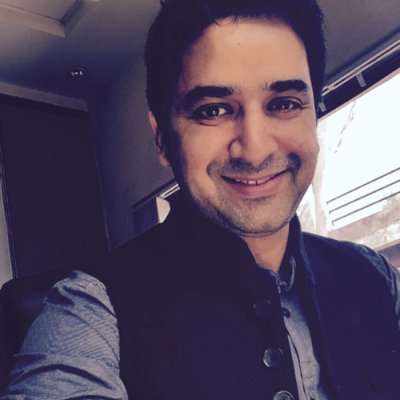Rajesh Razdan Co-Founded mCarbon with Brij Mohan Mahendru in 2008. An industry veteran with more than 17 years of experience, Rajesh has held senior positions with leading Telecom Organizations including KPN International Consulting, Ericsson, and Roamware and met his co-founder in an organisation wherein they worked together. Both knew that there was a lot of lacuna in the overall telco space and were sure about the growth opportunity. As first time entrepreneurs, they saw the big picture and a broad space to operate in and gaps that which they thought if they plugged would give them a comfortable head start. Also, some amount of domain expertise did help to zero in on the areas of opportunities and the product thoughts came from the possibilities of filling these gaps.
The initial product they decided to build, fulfilled the need of the certain way some of the telecom value added services were were consumed and there was a propensity for telecom operators to pay for this gap and increase their customer satisfaction and revenues both.Started in 2007 and both of them had 10 plus odd years of prior experience working with similar sort of environments. Rajesh talks about the initial challenges as now they were representing their own brand and which had their personal reputation and goodwill to bank on and of course a determination to deliver what was being promised to the potential customer.From a selling perspective, this was quintessential solution sale that were very conversational embedded with deep insight of the customer problem, their approach towards that and their unique way of delivering the solution in shortest possible time. He also shares that in India many customers need to be coaxed in a way that one has to do a consultative talk that eventually converts into a sale opportunity. No one otherwise, pays for a consultative opportunity separately specially at an operations level so it helps to bring a certain perspective, share experiences and then go for the sale.This makes sure the interest level of the prospect is instilled since they are equally keen to know various solution approaches and possibilities in a way the solution can be delivered and is suited best for her/him.
Rajesh had to keep talking about the potential problems and articulate the solutions on the fly. When he took his base product or platform and began talking to multiple buyers at the same time and figured out that many of them related with the problem and had a certain view to the solution. It helped reinforce the solution and further features of the product got automatically created based on these many conversations with the potential buyers as they all had different set of environments and challenges. This was classic pre customer feedback that helped in product development and enhancement as well which is very essential in growing up stage.
Rajesh talks about the pivots he did to his pricing/selling model. The initial model was a license sales model and the selling cycle was close to 6 to 8 months as the ticket size of these deals were ranging from 100 K USD to USD 1 Mn and the number of stakeholders were also a bigger number and had a lot of team members to decide on the deals. The first few customers came in with this model and the other interested qualified prospects had put this on hold because they did not want to commit on to such a huge investment. This model gave them the immediate surge of cash they needed to run the company but this had a disadvantage that they had to open the subsequent year with a new set of opportunities and doors to open to earn for that year. They took the feedback from a few customers and began building a system over a period of a few years and pivoted the pricing to an annuity model via a subscription or a SaaS model. Their new model allows them to own the customer by giving a solution or a product where it entails no investments for the customer but by mCarbon from a solution in terms of hardware, software and IP etc and mCarbon runs the entire process as a service and do revenue share. This allows them to get a sustained revenue model and they are also with the customer for a long haul and this also gives them visibility for the business in the next few months/years. This also helps them because the dynamics of a Telco business has changed drastically as the number of subscribers have gone up by 15 to 20 times over the few years and hence the types of boxes and the different technologies and give a similar sort of experience to the end customer or to the intermediary consumer – the operator has also changed.
The technology footprint for the size of the deal to put in data centres were also different. A solution for 1 Mn subscribers for 5 server with 200 Mn subscribers for 100 servers is different because there are so many touch points and integration points. Four to five years ago, data was not there and now the consumers have moved from feature phones to smart phones. Google was not as widely available on the phone 5 years ago and people went to browse either on their laptop but many people use phone today. The consumer behaviour has changed. Social media virality has also changed the consumer as people look at peer review, internet, site analysis before they make the purchase and all these dynamics had to be considered in subsequent versions of their product to provide consistent service to the Telcos and this model helped them to keep changing the product based on the customers changing needs since they were deeply involved with the customer every single day when they ran the process for the customer.
Due to his association with reputed firms, Rajesh always had some preliminary connects in many accounts which helped him secure an access to the decision makers in large organisations. In his conversation he talks about the challenges he had to face in the initial days to convince clients of their offerings. He explains the complex high level stages for a complex sales that he normally undergoes in a complex sales that utilises deep understanding of the customer account to go inside the account and navigate the organization to finding the decision maker(decision side, supply side and use one or two anchors – familiar people to bridge the bond with them) and figuring out the internal dynamics – competition, pros and cons, price points, USPs etc and circumventing those and he had to do it all by himself because he was not able to afford an experienced people to do these for him in the initial days and it was a long cycle. When the clients saw the negatives in working with a startup, he showed the flexibility, the agility and the time commitments to swing the deals in his favour.
Rajesh talks about his first big customer where they had floated a RFP . When Rajesh and team saw that they realized that the client will not stand to benefit in the long haul if they would stick on to the specifications and purchase a product or a solution and they went and requested to present a different solution at that stage and the client accepted it. Since they were passionate about the product and knew the space very well, they presented how the specifications can be done differently to ensure that the product works for the clients changing business environments over the next few years and got him supremely ahead of what the traditional large competitors were and he was immediately elevated to the top 3. This kind of approach helped mCarbon get the first deal of a 3 year contract within four to five months of starting . Rajesh says that he never compromises on price and they always are at a premium compared to their biggest competitor as they want to say that they have something that the others don’t have. They also sometimes do POCs with no advance but commits the customer to pay the money once they hit certain milestones.
Rajesh’s Advice to early stage startup – Never lose the intensity and the passion of what you started with in the first go , be agile and supremely confident of delivering what you are promising. The ground work has to be impeccable and the pricing and solution has to be right with the timing being perfect. One has to understand the organization, get the need and see how you would fit the need and remember that time plays an important role in the success of any start open.
Mcarbon(http://www.mcarbon.com/) is now around 200 plus people with business all over india and South East Asia. They are growing at CAGR of 50% YOY since 2013. They have raised money from Cannan Partners in 2009 and 2011 and they are now in the money with growth through internal accruals. They have been featured in Red Herring Top 100 Asia 2013 and were in the top 50 of Nasscom emerge in 2012 and the feather in the cap came in with their customer (they consider this the best award) – Airtel gave them the best value added services partner for Innovation among large companies like Nokia, Ericson and Huawei
Related posts:
 Pivot to build a great product based on the feedback from the First Few Sales
Pivot to build a great product based on the feedback from the First Few Sales
 Use your Personal Credibility to win the First Customer
Use your Personal Credibility to win the First Customer
 Network with people constantly to exponentially increase your reach to your first customer
Network with people constantly to exponentially increase your reach to your first customer
 Meet the economic buyers face to face as often as possible to turn your Idea into Revenue
Meet the economic buyers face to face as often as possible to turn your Idea into Revenue


